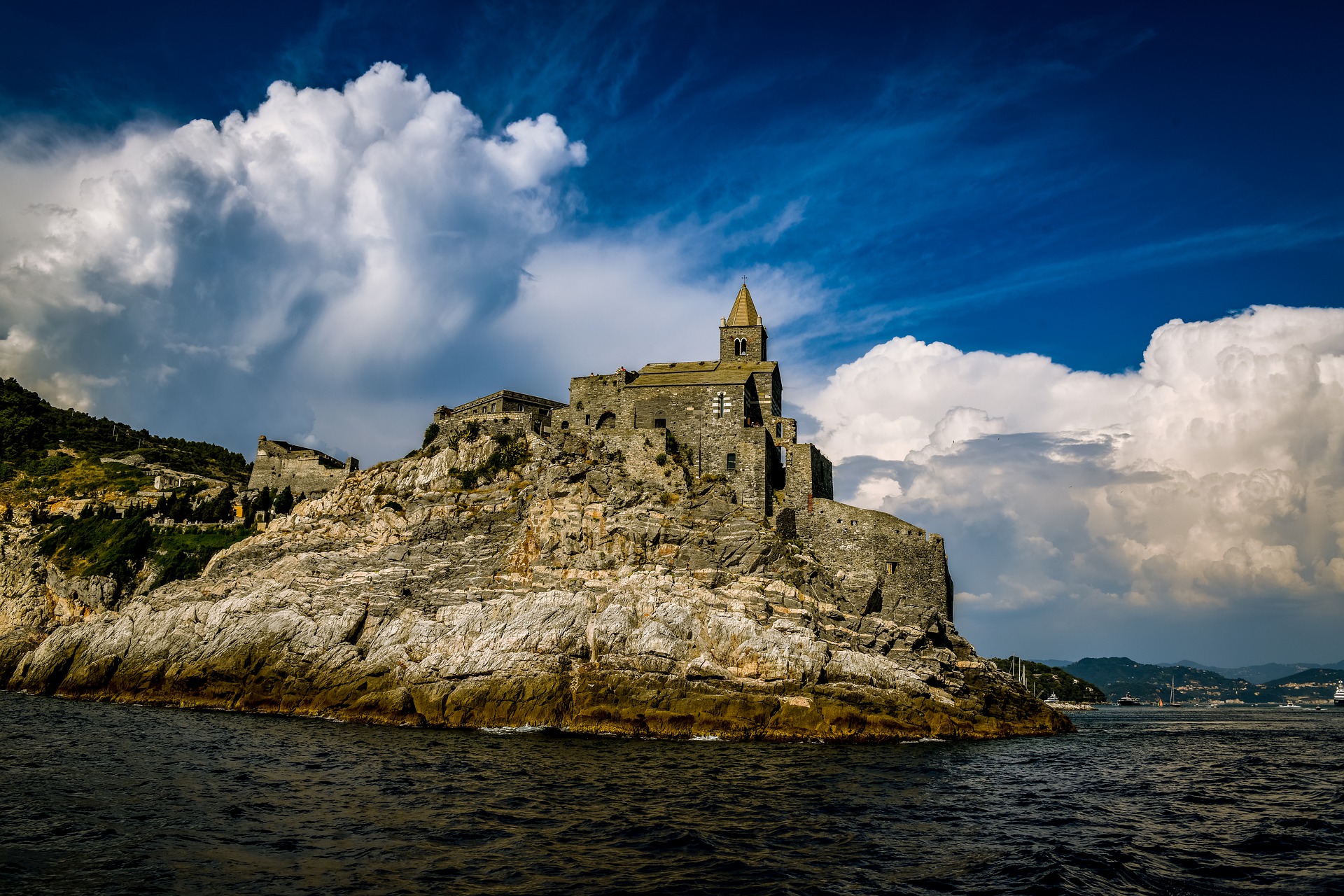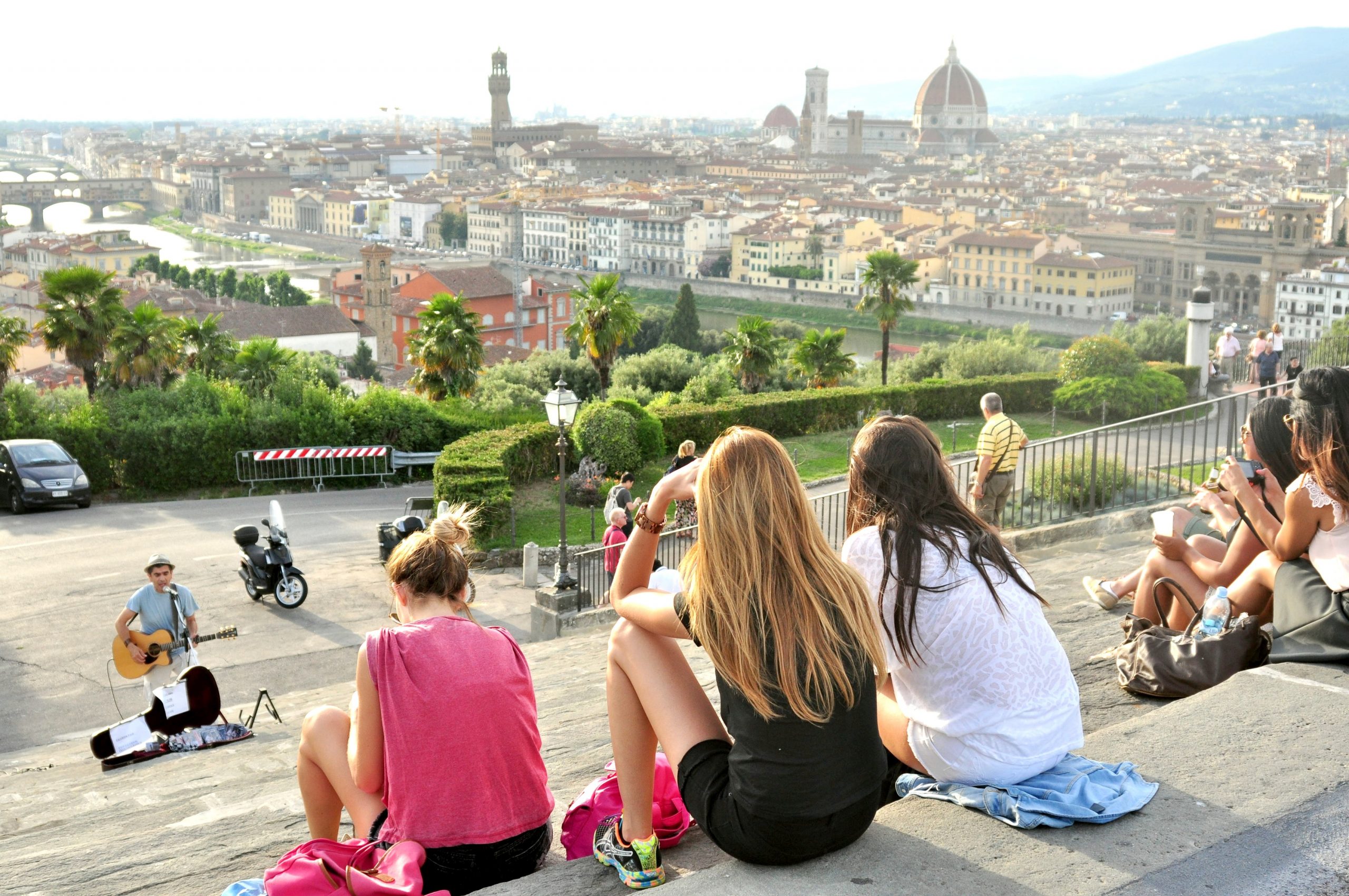My road trip along the Ligurian coastline brought me to Portovenere, where I explored its remarkable landmarks overlooking the sea. Panoramic vistas bordered by turquoise waters gave an exotic backdrop to this cliff-side paradise. Portovenere was a place where I longed to linger.
An old archway into the village began my walk through the medieval streets lined with several shops and cafes (see my post Illustrious Portovenere, from Pirates to Rainstorms). After passing through, I came upon the piazza L. Spallanzani. From there I could see the church of San Pietro, the remains of a castle fortress, and the surrounding Bay of La Spezia. I followed the winding pathway up to the top of a cliff that overlooked the Mediterranean Sea, spread out majestically to the far distant horizon.
High up on a rocky spur stands the small but exquisite church of San Pietro. Built upon the ruins of a temple to the goddess Venus, San Pietro became a Christian church in the sixth century. Modified by the Genoese in the thirteenth century, the Romanesque church grew into Gothic dimensions.
As I stepped inside the old church through a single doorway, I was taken by its small but ornate interior. It consists of three naves, the largest in the center with a white marble altar. The gray and white Gothic stripes can be seen on the inside as well as out. It reminded me of the duomo in Siena. This striping effect was a popular Gothic addition to churches at the time. Historically, San Pietro survived a major fire from the Aragone bombardment in 1494, was ordered to be the battery for Gulf defense by Napoleon, sacked several times, and was occupied by Austrian-Russian troops. Yet there it remains, steadfast and unshakable. I felt captivated by its beauty.
This long row of arches is located right next to the church, adding a touch of elegance to the unique setting. Eugenio Montale, in his poem Portovenere, gives thought to its beginnings… “there comes Triton, from the waves that lap the threshold of a Christian temple, and every near hour is ancient…here, you are at the origins.” I kept looking for mermaids playing in the water, or Neptune with his trident! But, unfortunately, they must have been hiding on this cloudy day.
Have you ever heard of the Bay of Poets? I had, many years ago, and thought it sounded so romantic. I was sure I would visit it one day. Well, here I am. It is just as beautiful as I envisioned.
Lord Byron and his good friend Shelley are responsible for the name. The Bay of Poets is actually the Gulf of La Spezia. Lord Byron lived in Portovenere for a time (see my previous post, “Swim with Lord Byron in the Bay of Poets” for more details). There is a plaque on the church that commemorates Lord Byron’s courage and strength.
The Doria Castle fortress above the town was built by the Genoese in 1161 and has been the area’s defense for centuries. The extremely wealthy Doria family were very involved in the political, military and economic life of the Genoese from the twelfth to the sixteenth centuries.
The massive walls come outward toward the base, making the castle appear much larger than it actually is. Today the castle is available for special events, offering an amphitheater and a terrace overlooking the sea. Portovenere is a sensational experience. Lord Byron’s words from a poem of his brings visions of this lovely village to my mind. “Be thou the rainbow in the storms of life. The evening beam that smiles the clouds away, and tints tomorrow with prophetic ray.”





























